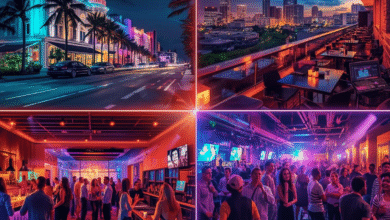Optimize imagesize:地藏王菩薩 1920×1080 for Web & Art

In today’s fast-paced digital world, visual content reigns supreme. Whether you’re a designer, marketer, or simply a lover of art, optimizing images is essential for a powerful online presence. In this article, we’ll explore how to optimize imagesize:地藏王菩薩 1920×1080 images, uncovering the technical ins and outs while celebrating the cultural legacy behind 地藏王菩薩. So, grab a cup of your favourite brew, settle in, and let’s journey through the world where culture meets cutting-edge technology!
Table of Contents
| Section | Description |
| Introduction | Why optimizing imagesize:地藏王菩薩 1920×1080 matters |
| Cultural Significance | Meaning, symbolism, and historical background |
| Technical Insights | Resolution, compression, and tools |
| Use Cases | Practical applications and real-world impact |
| SEO & Metadata | Best practices for naming and discoverability |
| Expert Opinions | Views from designers and technologists |
| Future Trends | AI, ML, and sustainable optimization |
| Tutorial | Step-by-step guide for beginners |
| FAQs | Clear answers to common questions |
Introduction to Optimizing imagesize:地藏王菩薩 1920×1080 for Modern Media
Modern media demands not only eye-catching visuals but also crisp, fast-loading images that retain quality across every device. imagesize:地藏王菩薩 1920×1080 isn’t just a specification—it’s a blend of technical precision and artistic expression that brings traditional art into the modern digital arena.
Overview of imagesize:地藏王菩薩 1920×1080
When you see this image size, picture a harmonious balance between technology and tradition. The format ensures that images of 地藏王菩薩—a revered figure in Buddhist art—display beautifully on screens of all sizes, preserving intricate details for digital platforms.
Meaning and Cultural Significance
地藏王菩薩 (Kṣitigarbha Bodhisattva) is a figure known for his vow to relieve suffering. Optimizing his images for digital use at 1920×1080 allows modern viewers to experience ancient wisdom and beauty in high resolution.
Historical Significance of 地藏王菩薩 Imagery
Origins and Evolution
Initially seen in temples and scriptures, the depictions of 地藏王菩薩 have evolved alongside Buddhist practice. Artists across Asia have depicted him in various styles over the centuries through painting and sculpture.
Traditional Representations
Traditionally, 地藏王菩薩 is depicted with a serene expression, monk’s robe, and staff. Each image was more than visual—it conveyed teachings and emotional connection. Digital formats now continue that purpose in a new medium.
Technical Aspects of Image Optimization
What is Image Optimization?
Image optimization means reducing file size without sacrificing quality—enhancing speed, SEO, and user experience. It’s essential for performance, especially on image-heavy websites or apps.
Basic Principles of Digital Imaging
Digital images are built from pixels, resolution, and compression. Understanding these helps in optimizing images that are both lightweight and high-quality.
The Importance of 1920×1080 Resolution
Why 1920×1080 is Ideal for Modern Media?
Known as Full HD, 1920×1080 fits modern monitors and mobile devices perfectly. It’s a resolution that balances sharpness with file efficiency—making it a top pick for professionals.
Technological Relevance Today
With so many platforms using HD displays, ensuring your image is 1920×1080 means it will appear as intended across environments—from phones to projectors.
Techniques for Optimizing Image Size
Compression Techniques for 1920×1080 Images
There are two primary ways to compress your images:
| Compression Type | Description | Best For | Quality Retention |
| Lossless | Maintains all image data, no quality loss | High-detail artwork, archives | Excellent |
| Lossy | Reduces size by discarding some data | Web content, fast-loading pages | Good to Moderate |
Choosing between them depends on your goals: fidelity vs. performance.
Software and Tools for Image Optimization
Recommended Tools for Optimization
Some tools are ideal for beginners, while others offer advanced features:
| Tool | Type | Features |
| TinyPNG | Free | Drag-and-drop interface, supports PNG & JPG |
| ImageOptim | Free | Mac-focused, clean UI, strong compression |
| Adobe Photoshop | Paid | Advanced control, metadata editing |
| Affinity Photo | Paid | Cheaper than Photoshop, professional-grade |
Experiment with both free and paid tools to determine which one suits your workflow best.
Practical Applications in Modern Media
Use Cases for Optimized Images
Whether for digital galleries or marketing campaigns, optimized images:
- Load faster
- Enhance SEO
- Engage users better
Websites, Social Media, and Digital Marketing
Fast-loading and crisp images improve bounce rates, retention, and conversion, which are key for e-commerce and branding. On platforms like Instagram or Pinterest, consistency in resolution matters.
Cultural Impact and Modern Adaptation of 地藏王菩薩 Art
Blending Tradition with Modern Media
The digital representation of 地藏王菩薩 enables global audiences to engage with sacred art, regardless of their location.
Case Studies and Examples
Online Buddhist art archives now use 1920×1080 images to balance access, speed, and authenticity, serving both scholarly and devotional communities.
Best Practices in File Naming and SEO
Optimizing Metadata with Focus Keywords
Use the keyword in:
- File name: imagesize_地藏王菩薩_1920x1080.jpg
- Alt text: “High-resolution image of 地藏王菩薩 in 1920×1080 format”
- Caption and surrounding content
Incorporating “imagesize:地藏王菩薩 1920×1080”
SEO-optimised filenames and alt descriptions increase discoverability while honouring the cultural significance of the image.
Challenges in Image Optimization
Common Pitfalls and How to Avoid Them
- Over-compression: Blurs key details
- Under-compression: Slows website speed
- Ignoring Metadata: Misses SEO benefits
Balancing Quality and File Size
The goal is harmony—clear visuals without burdening page speed. Test various versions to find the sweet spot.
Future Trends in Image Optimization
Emerging Techniques and Technologies
Look for AI-based image compressors that learn what parts of an image to preserve vs. compress.
AI and Machine Learning Applications
Tools like Squoosh or SmartResize use machine learning to intelligently reduce size without compromising aesthetics—a perfect solution for cultural images.
Community Insights and Expert Opinions
Perspectives from Digital Artists and Technologists
Experts agree: Optimizing traditional art for digital use requires care. It’s not just file management—it’s about digital stewardship of culture.
Discussions on Cultural Image Usage
Respect and accuracy matter. Always maintain artistic integrity, especially when handling sacred figures like 地藏王菩薩.
Environmental Impact of Digital Media
Eco-Friendly Optimizations
Lighter images mean fewer server requests, less data transferred, and lower energy usage—small steps that contribute to a greener digital future.
Energy Efficiency in File Management
When scaled across millions of websites, optimized image use can dramatically reduce the carbon footprint of the internet.
Step-by-Step Guide to Optimizing Your Image
Practical Tutorial
Step 1: Upload your image to your preferred editing tool
Step 2: Inspect for quality; adjust brightness and color as needed
Step 3: Choose compression type—lossless for quality, lossy for speed
Step 4: Resize image to exactly 1920×1080 pixels
Step 5: Save with keyword-optimized filename
Step 6: Add alt text and description
Step 7: Test across devices
Step 8: Publish and monitor load times
Conclusion
Optimizing imagesize:地藏王菩薩 1920×1080 imagery is about more than resolution. It’s a careful mix of technical expertise and cultural mindfulness. Whether for art, education, or marketing, using the right tools and practices ensures that your visuals resonate—while loading fast, looking sharp, and honoring their spiritual roots.
FAQs
Q1. What does “imagesize:地藏王菩薩 1920×1080” mean?
It refers to a high-definition digital image of 地藏王菩薩 optimized to 1920×1080 pixels for quality and performance.
Q2. Why is 1920×1080 ideal for digital media?
It strikes a balance between clarity and compatibility, making it ideal for screens, web, and print use.
Q3. What is the difference between lossless and lossy compression?
Lossless compression retains all details, resulting in a larger file size; lossy compression reduces file size with minor quality loss.
Q4. How do I optimize image metadata for SEO?
Use relevant keywords in the file name, alt text, and surrounding content to enhance search visibility.
Q5. What trends are shaping the future of image optimization?
AI-driven tools and eco-conscious file strategies are leading the way in balancing quality, speed, and sustainability.




